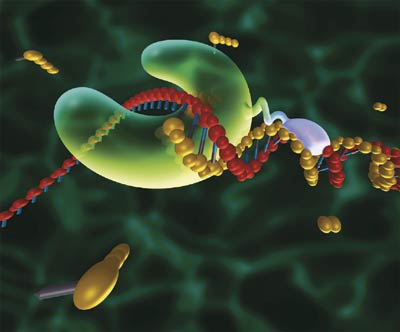Team:Cambridge/Gibson/Protocol
From 2010.igem.org
(Difference between revisions)
(→Step 3: PCR) |
(→Step 3: PCR) |
||
| Line 40: | Line 40: | ||
|4:Elongation | |4:Elongation | ||
|72 | |72 | ||
| - | |45s | + | |45s per kb DNA |
|- | |- | ||
|5:GoTo step 2 | |5:GoTo step 2 | ||
Revision as of 20:22, 23 October 2010

Gibson Assembly: Protocols
The formal paper in nature describing Gibson Assembly can be found [http://www.nature.com/nmeth/journal/v6/n5/full/nmeth.1318.html here].
Step 1: Design Primers
- If you wish to ligate two pieces of DNA using Gibson they must be altered so as to have 40bp of overlap at the point of ligation.
- The standard way to do this is with PCR with specialised primers
- We have designed a tool to help you do this: [http://www.gibthon.org Gibthon]
Step 2: Order Primers
- This step can take a while, so Gibson Assembly requires some planning ahead
Step 3: PCR
PCR is a dark art, but we have found that these general principles have served us well over the summer.
| Step | Temp | Time |
| 1:Initial Melting | 98°C | 30s |
| 2:Melting | 98°C | 10s |
| 3:Annealing | Tm°C | 15s |
| 4:Elongation | 72 | 45s per kb DNA |
| 5:GoTo step 2 | 30 times | |
| 6:Final Elongation | 72°C | 7m30 |
| 7:Final Hold | 4°C | ∞ |
The Annealing Tm that should be used is the temperature of the main 20 or so bases of the primer (not including the flap), since the flap only begins to anneal after the first few cycles, by which point primer specificity is less of an issue.
Step 4: Gibson Assembly
- Prepare Master Mix
- Add DNA to be ligated and Master Mix in volumetric ratio 1:3
- Incubate for 1 hour at 50°C
e.g. If you were ligating two fragments (A and B) you could put:
| 2.5µl | fragment A |
| 2.5µl | fragment B |
| 15µl | Gibson Master Mix |
Step 5: Transformation
 "
"
